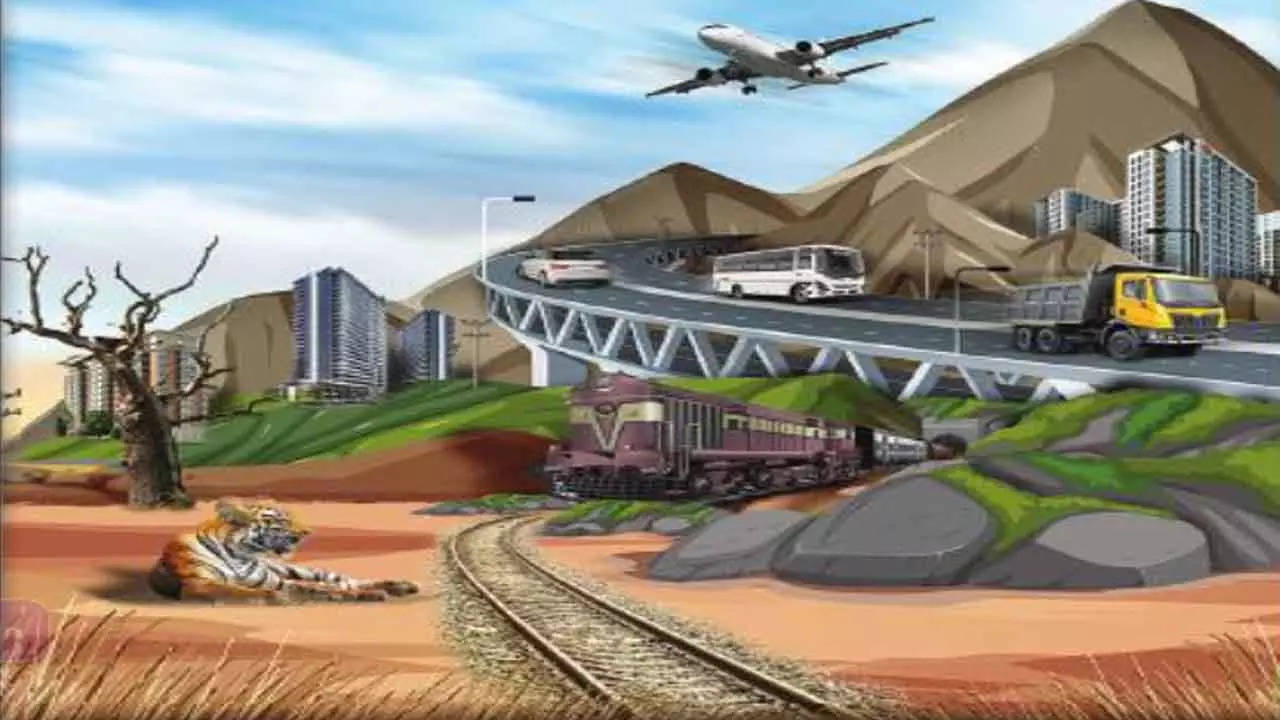India
Way ahead: Rein in man so tigers can flourish | India News

[ad_1]
On April 1, 1973, Union minister for tourism Karan Singh remarked, “The tiger may not be seen by our children when they grow up if the present trends are not reversed.” His fears did not come true, and today’s children are seeing wild tigers.
But what about the next 50 years? Experts warn that due to people-centric policies and lack of political will, the way ahead for tiger conservation will be the toughest challenge.
Debi Goenka, executive trustee, Conservation Action Trust (CAT) in Mumbai, issued a categoric warning. “Given the manner in which tiger habitats and corridors are being destroyed by the cluster of road, railway and other linear projects, children born after 2050 are unlikely to see wild tigers. Prime Minister Narendra Modi must crack down on the Project Tiger authorities who are endlessly allowing our forests and natural infrastructure to be destroyed under the label of ‘development’.”
Goenka’s fears are not unfounded. To cite an example, the proposed expansion of the railway network across Central India alone threatens to cut at least 13 tiger corridors across 23 tiger reserves. Already, a dozen big cats have been run over in a couple of years on the Gondia-Chanda Fort-Ballarshah section in the Navegaon-Nagzira and Tadoba Tiger Reserve landscapes.
Indian Railways have taken up tripling and quadrupling of railway lines which will cut multiple corridors in the Central Indian Tiger Landscape (CITL). While the third line through Ratapani Wildlife Sanctuary in MP has been cleared with mitigation measures by the National Board for Wildlife (NBWL), such plans remain a grey area. A third and fourth line are being laid on Delhi-Chennai and Mumbai-Howrah routes. Both cut across major swathes of forests in Central India.
Wildlife biologist Aditya Joshi says, “The effect of the development of just two roads — NH7 & NH6 — increases tiger extinction risk by 50%. Similar risk will increase with the two major railway lines.”
Anish Andheria, president of WCT, says, “Project Tiger model has evolved over five decades ago from ‘protectionism’, where the rights of people were shortchanged, to ‘participatory’ where people’s interests matter.”
Andheria says, “Voluntary relocation of villages from reserves has created inviolate spaces for tigers and their prey, but the success is not equally spread across the country. Out of 18 states, only eight — MP, Karnataka, Uttarakhand, Maharashtra, Assam, Tamil Nadu and Kerala — have been able to bring this turnaround.”
Of the 2,967 tigers currently in India, these eight states contribute 2,448 tigers (82%). The remaining 10 states contribute an abysmal 18%.
On the way ahead, YV Jhala, a biologist and former dean with WII, says, “In many tiger habitats such as the Northeast hills bordering Myanmar, and in the states of Odisha, Jharkhand and Chhattisgarh, forest communities still consume animal-meat. Forests are devoid of wild prey and, therefore, there are no tigers.”
“Some tiger habitats are Naxal strongholds. Once habitats in these states are restored, both prey and tigers would recover since the habitat is good. Once prey populations are restored, another 1,000–1,500 tigers can be accommodated in these regions,” Jhala claims.
However, Andheria feels the vision for the next 50 years should be to repopulate empty tiger reserves in Arunachal Pradesh, West Bengal, Odisha, Telangana, Mizoram, Jhar-khand, Bihar, Chhattisgarh and Uttar Pradesh.
“For retaining the evolutionary potential of tigers as a species, we should strive to conserve the entire extant gene pool, range of habitats, behaviours that are culturally inherited, and manage populations while mitigating fragmentation caused by human activities,” says Andheria.
Conservation scientist K Ullas Karanth says, “In some places, conservation and development must overlap, but they must remain separate at other places to bring back tigers on the scale that is possible.”
But what about the next 50 years? Experts warn that due to people-centric policies and lack of political will, the way ahead for tiger conservation will be the toughest challenge.
Debi Goenka, executive trustee, Conservation Action Trust (CAT) in Mumbai, issued a categoric warning. “Given the manner in which tiger habitats and corridors are being destroyed by the cluster of road, railway and other linear projects, children born after 2050 are unlikely to see wild tigers. Prime Minister Narendra Modi must crack down on the Project Tiger authorities who are endlessly allowing our forests and natural infrastructure to be destroyed under the label of ‘development’.”
Goenka’s fears are not unfounded. To cite an example, the proposed expansion of the railway network across Central India alone threatens to cut at least 13 tiger corridors across 23 tiger reserves. Already, a dozen big cats have been run over in a couple of years on the Gondia-Chanda Fort-Ballarshah section in the Navegaon-Nagzira and Tadoba Tiger Reserve landscapes.
Indian Railways have taken up tripling and quadrupling of railway lines which will cut multiple corridors in the Central Indian Tiger Landscape (CITL). While the third line through Ratapani Wildlife Sanctuary in MP has been cleared with mitigation measures by the National Board for Wildlife (NBWL), such plans remain a grey area. A third and fourth line are being laid on Delhi-Chennai and Mumbai-Howrah routes. Both cut across major swathes of forests in Central India.
Wildlife biologist Aditya Joshi says, “The effect of the development of just two roads — NH7 & NH6 — increases tiger extinction risk by 50%. Similar risk will increase with the two major railway lines.”
Anish Andheria, president of WCT, says, “Project Tiger model has evolved over five decades ago from ‘protectionism’, where the rights of people were shortchanged, to ‘participatory’ where people’s interests matter.”
Andheria says, “Voluntary relocation of villages from reserves has created inviolate spaces for tigers and their prey, but the success is not equally spread across the country. Out of 18 states, only eight — MP, Karnataka, Uttarakhand, Maharashtra, Assam, Tamil Nadu and Kerala — have been able to bring this turnaround.”
Of the 2,967 tigers currently in India, these eight states contribute 2,448 tigers (82%). The remaining 10 states contribute an abysmal 18%.
On the way ahead, YV Jhala, a biologist and former dean with WII, says, “In many tiger habitats such as the Northeast hills bordering Myanmar, and in the states of Odisha, Jharkhand and Chhattisgarh, forest communities still consume animal-meat. Forests are devoid of wild prey and, therefore, there are no tigers.”
“Some tiger habitats are Naxal strongholds. Once habitats in these states are restored, both prey and tigers would recover since the habitat is good. Once prey populations are restored, another 1,000–1,500 tigers can be accommodated in these regions,” Jhala claims.
However, Andheria feels the vision for the next 50 years should be to repopulate empty tiger reserves in Arunachal Pradesh, West Bengal, Odisha, Telangana, Mizoram, Jhar-khand, Bihar, Chhattisgarh and Uttar Pradesh.
“For retaining the evolutionary potential of tigers as a species, we should strive to conserve the entire extant gene pool, range of habitats, behaviours that are culturally inherited, and manage populations while mitigating fragmentation caused by human activities,” says Andheria.
Conservation scientist K Ullas Karanth says, “In some places, conservation and development must overlap, but they must remain separate at other places to bring back tigers on the scale that is possible.”
#ahead #Rein #man #tigers #flourish #India #News






